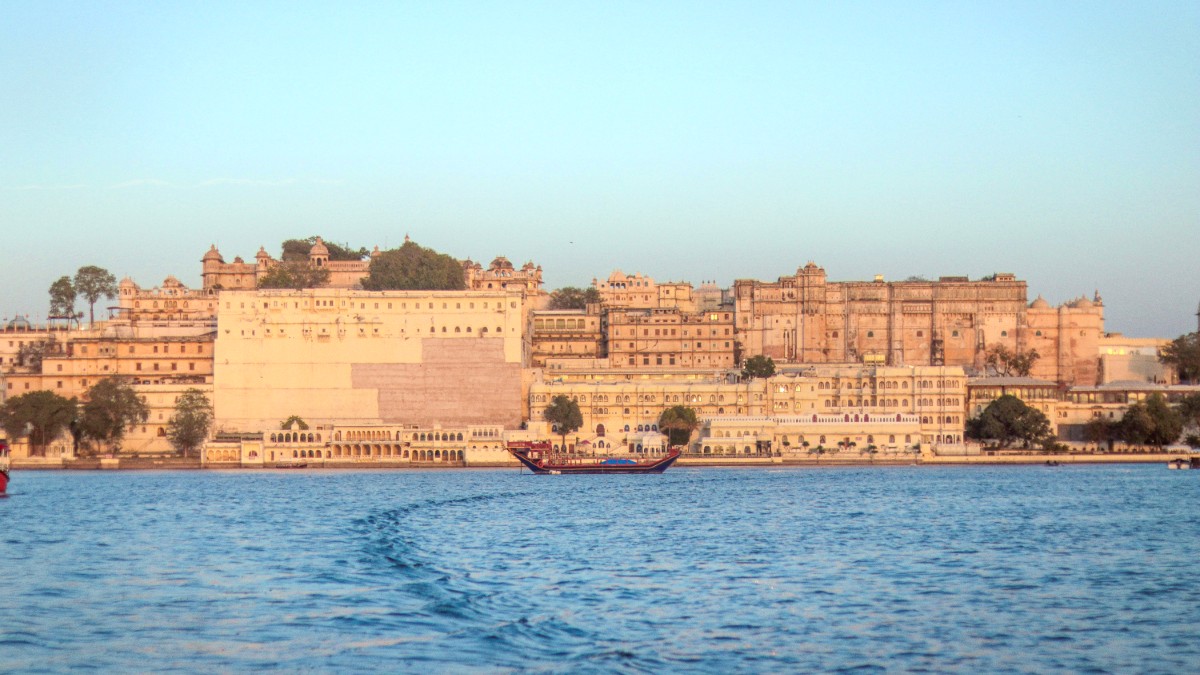
Rajasthan, India
Travelers find Udaipur a peaceful contrast to the bustling metropolises of India. Its beauty extends beyond postcard-perfect views; encompassing the artistry of its people, the flavors of its cuisine, and the warmth of its traditions. Udaipur truly earns its reputation as one of India's most romantic and visually appealing cities, delivering a rich experience for all who visit.
Many travelers visit Udaipur seeking its tranquil beauty, often finding solace in a boat ride on Lake Pichola as the sun dips below the horizon. The golden light illuminates the palaces, crafting a spectacle of light and shadow.
This quiet moment, with the city's iconic landmarks bathed in a warm glow, becomes a cherished memory for many.
Udaipur is in the southern part of Rajasthan, a state known for its desert landscapes and historical forts. The city sits nestled within the ancient Aravalli Range, one of the oldest mountain ranges in the world. These hills serve as a natural defense and a scenic backdrop to the city's lakes and palaces.
A network of artificial lakes defines Udaipur’s urban landscape. Lake Pichola, the oldest and most famous, sits at the heart of the city. Fateh Sagar Lake, another large artificial lake, lies north of Pichola. Swaroop Sagar Lake connects these two larger bodies of water, maintaining their water levels. These lakes were constructed centuries ago as water reservoirs for the city and its surroundings.
The Aravallis shape Udaipur’s climate, resulting in a slightly milder environment.
The green hills create hiking opportunities and elevated viewpoints.
Palaces and forts strategically built to command views of the landscape and water.
The city center concentrates around Lake Pichola, dominated by the City Palace.
Hills mean visitors can gain elevated views, appreciating the city’s layout.
Today, the lakes are central to Udaipur’s identity, displaying both visual beauty and possibilities for recreation. The lakeside setting, surrounded by hills, bestows Udaipur a distinct character that differentiates it from other Rajasthani cities.
The land around Udaipur consists of rolling hills and fertile plains where agriculture supports local communities.
The construction of the intricate lake systems showcases the engineering prowess of the era, yielding water security and beautifying the city.
This combination of water, hills, and historical construction forms the unique "City of Lakes" environment.
Udaipur's history spans centuries, rooted in the valor and traditions of the Mewar Kingdom. Founded in 1559 by Maharana Udai Singh II, the city became the new capital of Mewar after the Mughal Emperor Akbar besieged Chittorgarh. The Maharanas of Mewar, belonging to the Sisodia Rajput clan, resisted Mughal rule for generations, establishing Udaipur as a symbol of Rajput independence and pride.
Their legacy is evident in the city's architecture, customs, and the stories passed down through generations.
Founded in 1559 by Maharana Udai Singh II, a new capital for Mewar.
A sprawling complex, a symbol of Udaipur's royal past, built over 400 years.
Prince Khurram (Shah Jahan) found refuge in Jag Mandir, inspiring future designs.
The resistance of Maharana Pratap against the Mughals cemented Mewar's reputation for spirit. Udaipur remained the heart of this resistance, embodying the Rajput ethos of sacrifice and defiance. This deep historical background influences local culture.
A day often begins with the tranquility of Lake Pichola, perhaps a quiet sunrise walk along Ambrai Ghat.
Midday activities often mean exploring the vast City Palace complex, where museums display royal artifacts.
Evenings in Udaipur are notably enchanting, with boat rides and lakeside dining.
From luxurious heritage hotels presenting unparalleled royal experiences to budget-friendly guesthouses in the heart of the old city, accommodation options suit every preference.
The culinary scene ranges from authentic street food to fine dining with lake views, promising a flavorful journey.
Udaipur is more than a collection of sights; it is an atmosphere, a feeling, a place where the past feels present, and every view is a story.